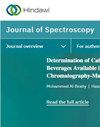基于深度学习算法和可见近红外光谱的土壤分类
IF 2.1
4区 化学
Q4 BIOCHEMICAL RESEARCH METHODS
引用次数: 11
摘要
土地覆被的变化会引起气候环境特征的变化,对社会经济和生态系统产生重要影响。土地覆盖的主要形式是不同类型的土壤。与传统方法相比,可见光和近红外光谱技术可以快速、有效、无损地对不同类型的土壤进行分类。基于可见近红外光谱技术,以中国青岛市果园、林地、茶园、农田、裸地和草地6种不同土地覆被类型土壤为例,建立了卷积神经网络分类模型。分析了不同数量训练样本的分类结果,并与支持向量机算法进行了比较。在Kennard-Stone算法划分校准集的条件下,卷积神经网络对6种不同土壤类型和单一6种土壤类型的分类结果优于支持向量机。在按1/3和1/4的比例随机划分标定集的情况下,卷积神经网络的分类效果也更好。本研究旨在分析基于卷积神经网络的小样本土地覆盖分类的可行性,并根据深度学习算法,探索快速、无损、准确的土地覆盖分类新方法。本文章由计算机程序翻译,如有差异,请以英文原文为准。
Soil Classification Based on Deep Learning Algorithm and Visible Near-Infrared Spectroscopy
Changes in land cover will cause the changes in the climate and environmental characteristics, which has an important influence on the social economy and ecosystem. The main form of land cover is different types of soil. Compared with traditional methods, visible and near-infrared spectroscopy technology can classify different types of soil rapidly, effectively, and nondestructively. Based on the visible near-infrared spectroscopy technology, this paper takes the soil of six different land cover types in Qingdao, China orchards, woodlands, tea plantations, farmlands, bare lands, and grasslands as examples and establishes a convolutional neural network classification model. The classification results of different number of training samples are analyzed and compared with the support vector machine algorithm. Under the condition that Kennard–Stone algorithm divides the calibration set, the classification results of six different soil types and single six soil types by convolutional neural network are better than those by the support vector machine. Under the condition of randomly dividing the calibration set according to the proportion of 1/3 and 1/4, the classification results by convolutional neural network are also better. The aim of this study is to analyze the feasibility of land cover classification with small samples by convolutional neural network and, according to the deep learning algorithm, to explore new methods for rapid, nondestructive, and accurate classification of the land cover.
求助全文
通过发布文献求助,成功后即可免费获取论文全文。
去求助
来源期刊

Journal of Spectroscopy
BIOCHEMICAL RESEARCH METHODS-SPECTROSCOPY
CiteScore
3.00
自引率
0.00%
发文量
37
审稿时长
15 weeks
期刊介绍:
Journal of Spectroscopy (formerly titled Spectroscopy: An International Journal) is a peer-reviewed, open access journal that publishes original research articles as well as review articles in all areas of spectroscopy.
 求助内容:
求助内容: 应助结果提醒方式:
应助结果提醒方式:


